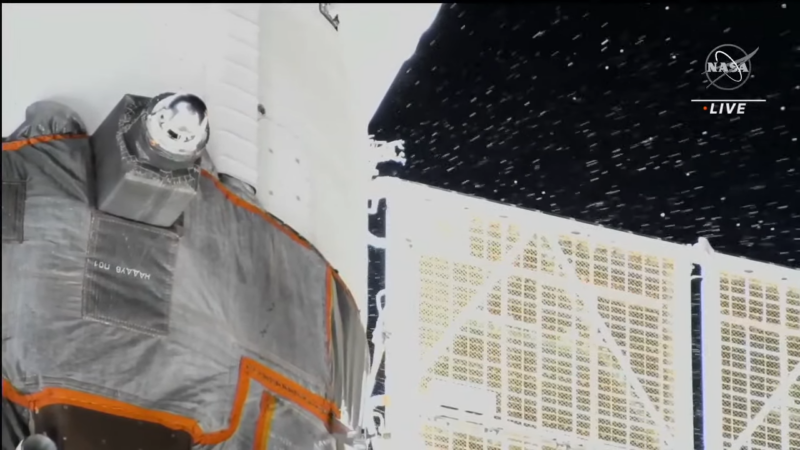
After working through the weekend to better characterize damage to its Soyuz spacecraft attached to the International Space Station, Russian specialists have decided to take no immediate action.
In a lengthy statement published Monday morning by Roscosmos (a VPN is required to access the site from Western nations), the Russian space corporation said it believed that a tiny piece of debris ruptured an external cooling loop that radiates heat from inside the Soyuz into space.
Working with NASA on Sunday to operate the long Canadarm2 manipulator arm, Russian specialists were able to get a clear look at the damaged area on the aft end of the Soyuz spacecraft. The area of the hole is about 0.8 mm across, which, although small, allowed all of the coolant in the external loop to be dumped into space last Wednesday. Importantly, the visual inspection discovered no other notable damage to the Soyuz vehicle from the debris strike.
Speaking to Russian media on Monday, the director general of Roscosmos said working groups of specialists would spend about another week assessing the issue. A decision on future actions will be taken on December 27, Yuri Borisov said. At this point, there are two options under consideration: flying three crew members back to Earth inside Soyuz MS-22 or autonomously flying the next Soyuz in line, Soyuz MS-23, up to the station for the return flight. This Soyuz could be ready for flight as early as February 19.
The crew of Soyuz MS-22, cosmonauts Sergey Prokopyev and Dmitri Petelin and NASA's Frank Rubio, launched to the space station in September. They had been due to return to Earth in March before the dramatic coolant leak, which has now delayed two spacewalks on board the International Space Station as astronauts work with ground controllers to assess the damage to the Soyuz.
Without a functional external radiator, there are concerns about the interior of the Soyuz spacecraft overheating. This could damage sensitive flight computers, necessitating a manual reentry into Earth's atmosphere. Much of the work over the next week will likely be conducted to understand how the spacecraft's internal temperature will change once it departs from the space station.
In reality, the Soyuz is a hardy spacecraft, built to withstand several failures. Certainly, Russian officials will be keen to use the existing spacecraft to fly home if at all possible. This is because there will be a substantial financial cost if the Soyuz MS-23 spacecraft, which was due to ferry three new passengers to the station in March, must be repurposed for this return flight.
Because Rubio is one of the three crew members slated to fly home, NASA is also closely scrutinizing the data. To date, the agency has offered limited public comment on the issue, preferring to give Russian specialists time to work on the problem and make recommendations on next steps.
For now, the biggest risk will come if there is a health emergency with Prokopyev, Petelin, or Rubio, or if there is some station issue that forces an emergency evacuation. At this time, it is not certain that the Soyuz MS-22 is a capable lifeboat.
Article From & Read More ( Russia says it will take no immediate action on damaged Soyuz spacecraft - Ars Technica )https://ift.tt/5X6flzo
Science
No comments:
Post a Comment